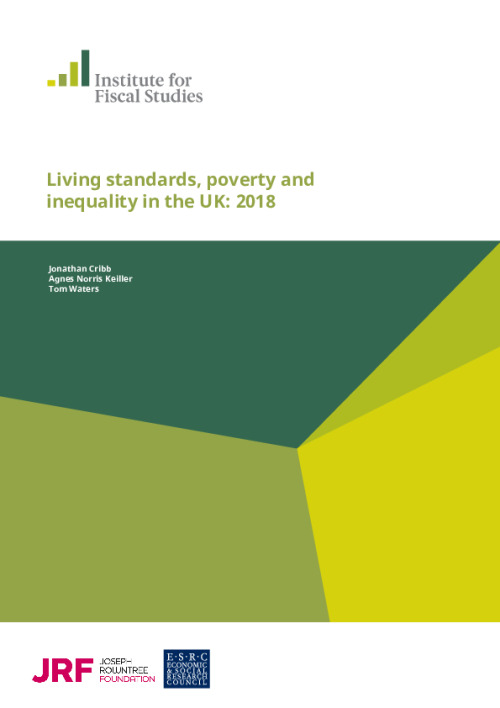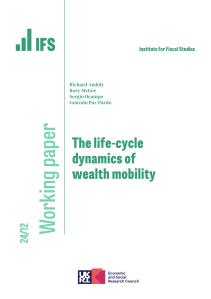This report examines changes in the distribution of household incomes in the UK, and the determinants and consequences of recent trends. This includes analysing changes not only in average living standards but also in household income inequality and measures of income poverty and deprivation.
The report looks at the following key issues.
- Analysis of changes in living standards, the determinants of recent trends, and how pensioners have fared relative to non-pensioners.
- Analysis of how income growth has differed across the income distribution and what implications this has had for income inequality.
- Changes in income poverty and in other measures of deprivation. The report also examines changes in the housing costs of low-income households with children and shows how these trends have caused different measures of poverty to gradually diverge over the last 15 years.
- An examination of the extent to which working-age adults in poor health live in poverty. The report describes the characteristics and labour market outcomes for those with and without long-standing illnesses, and analyses how their poverty and living standards differ. Different types of health conditions are examined, with a particular focus on mental health.
- An examination as to what extent low-paid workers’ pay, and their household living standards, have risen after the introduction of the National Living Wage in 2016. The report also examines the characteristics of people who are most directly affected by a higher minimum wage and how these compare with those of people affected by recent changes in benefits and tax credits.
The analysis is based on data from two main UK household surveys. The first is the Family Resources Survey (FRS), a survey of around 20,000 households a year, which contains detailed information on different sources of household incomes. We use household income variables derived from the FRS by the UK government’s Department for Work & Pensions (DWP). These measures of incomes underlie the DWP’s annual statistics on the distribution of income, known as ‘Households Below Average Income’ (HBAI). The FRS/HBAI data are available for the years from 1994–95 to 2016–17. They are supplemented by HBAI data derived from the Family Expenditure Survey (FES) for the years up to and including 1993–94.
In addition, we use information from Understanding Society. This is a longitudinal survey that follows the same people from one wave to the next, which allows us to examine changes in individuals’ incomes and economic circumstances. Robust data on household incomes in Understanding Society are available from 2010–11 to 2015–16.











